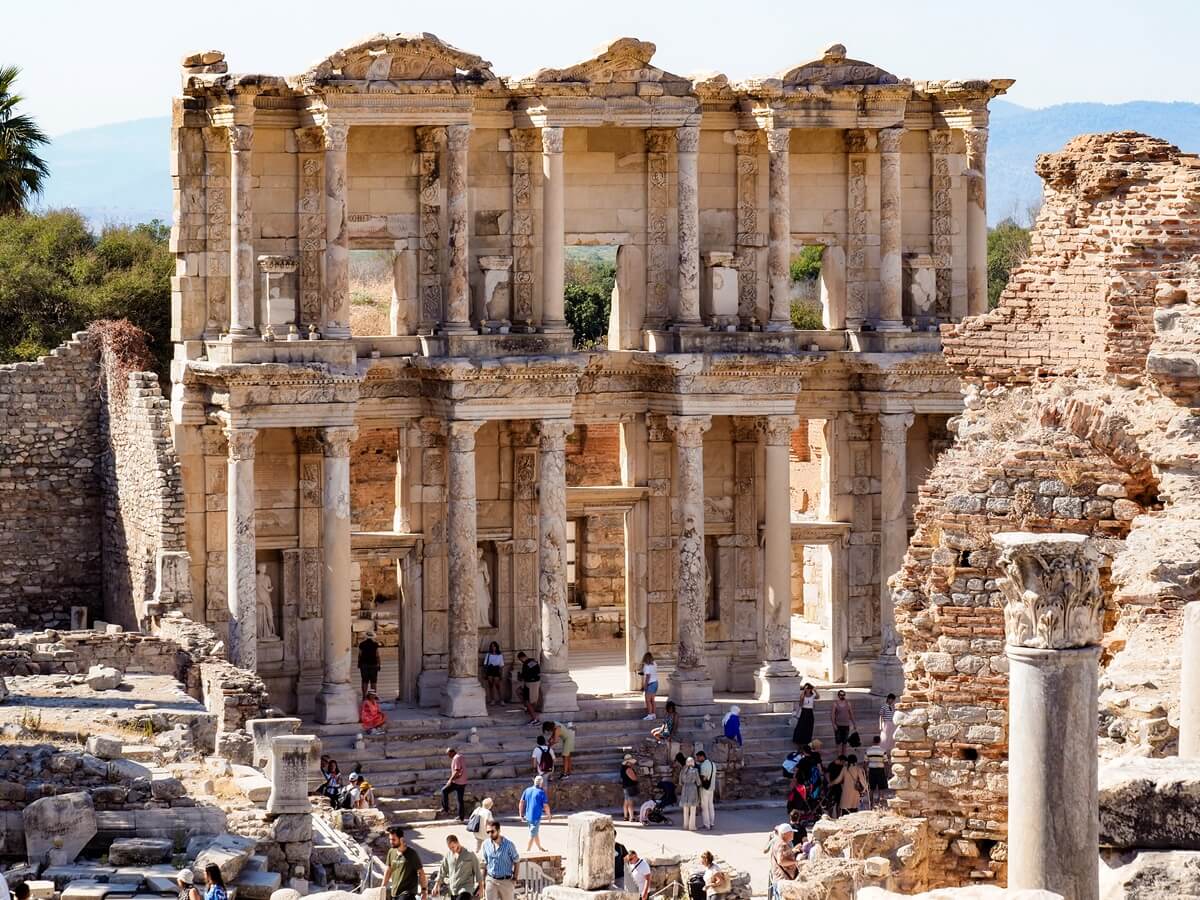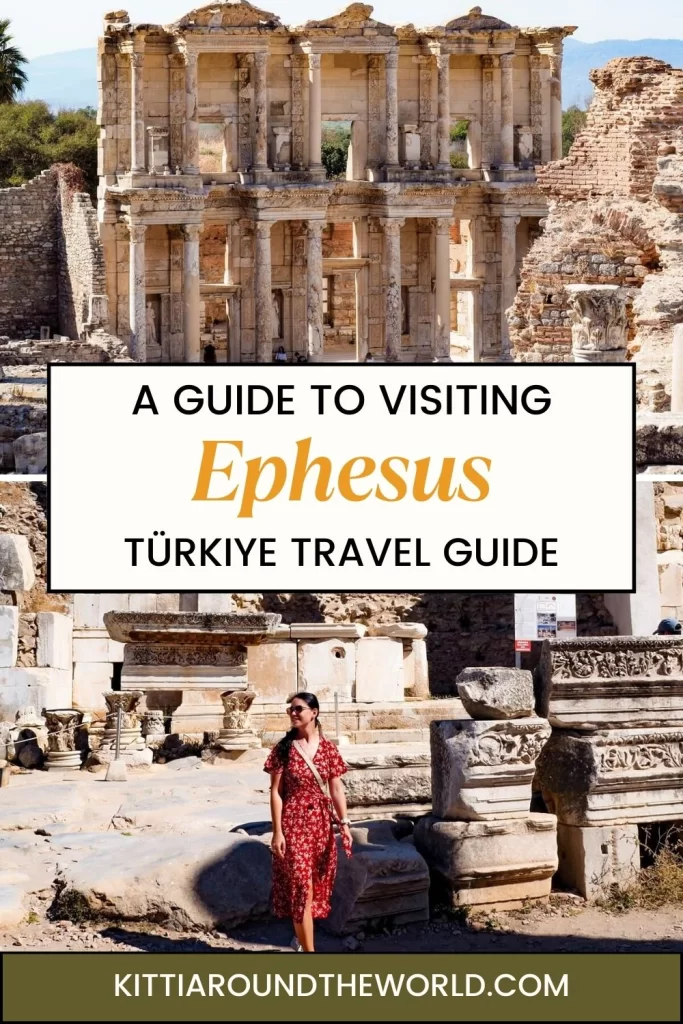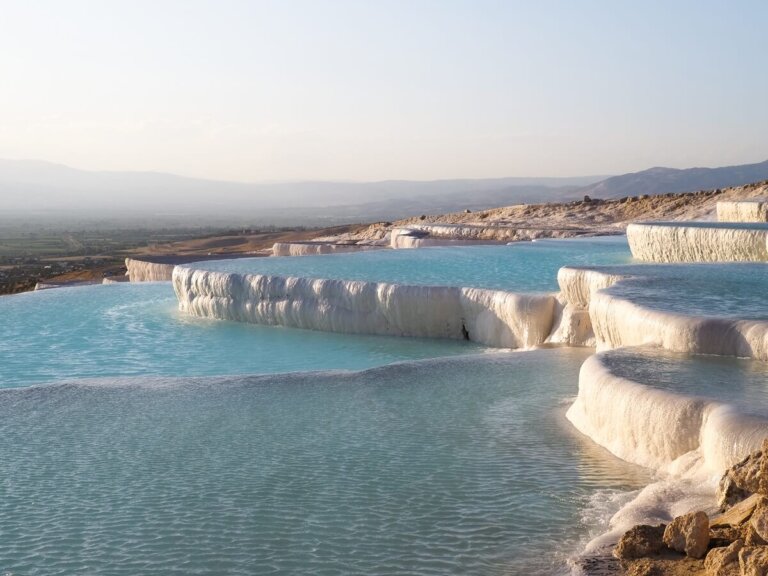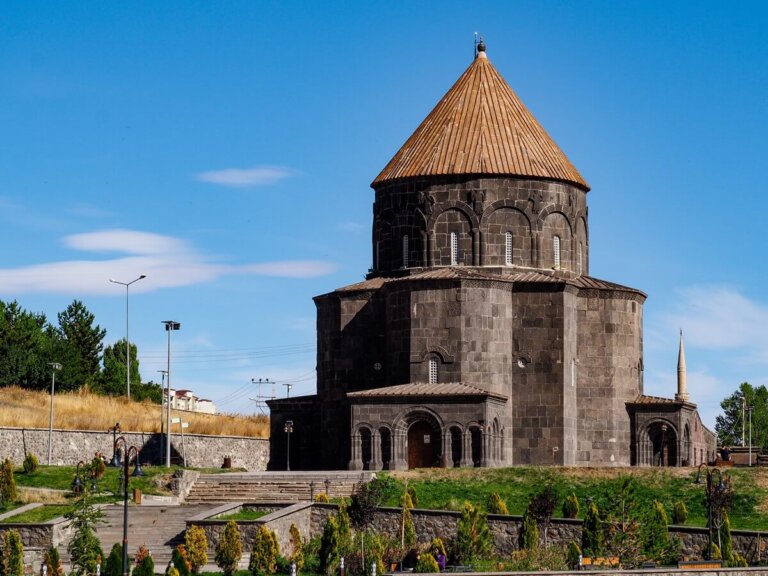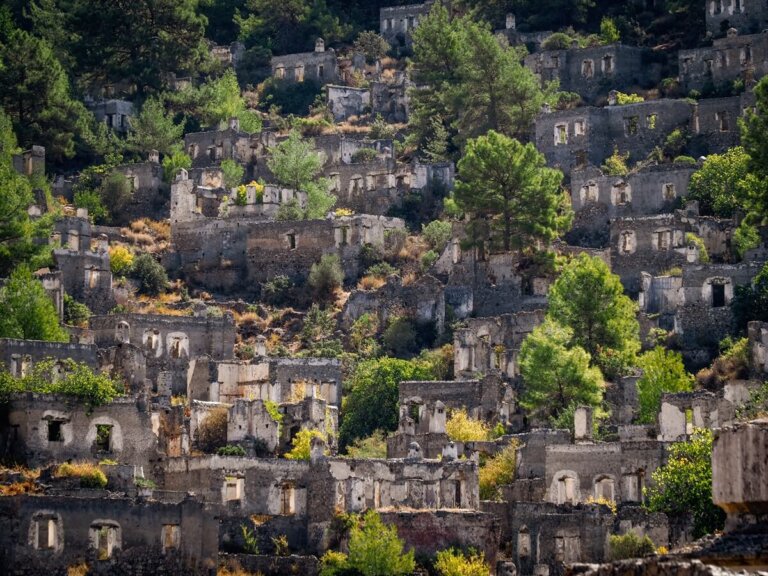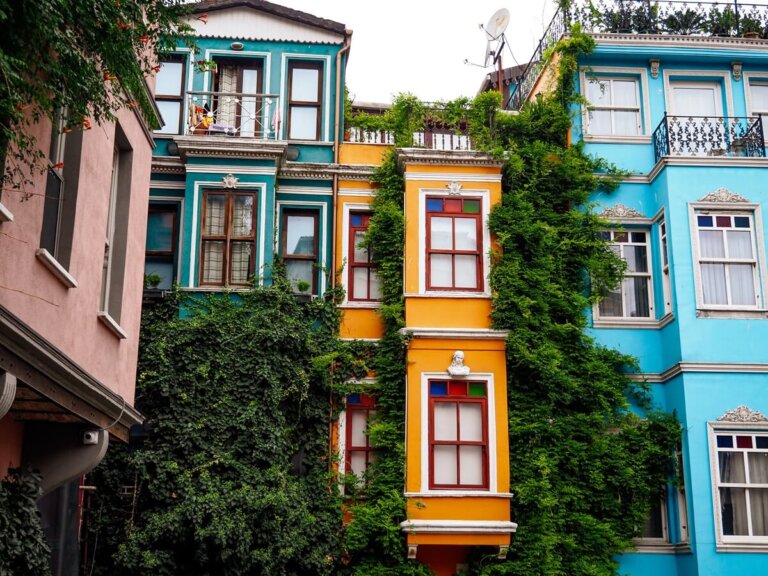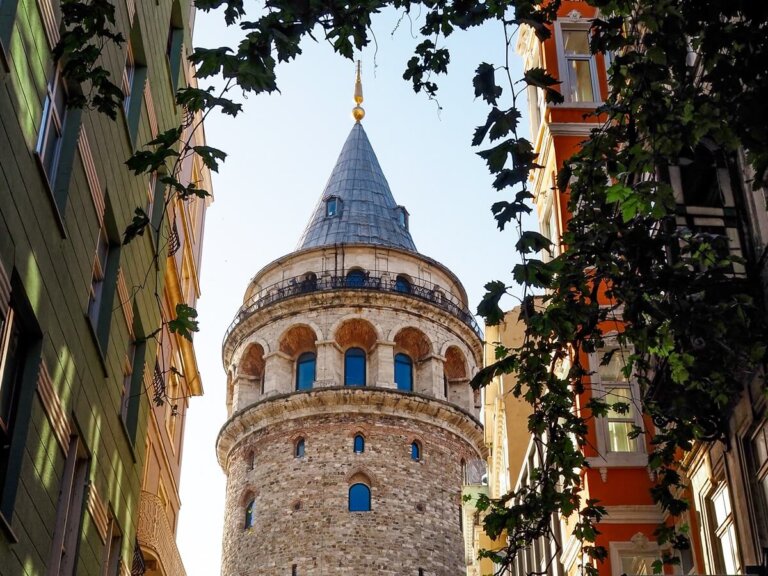A Guide to Visiting the Ancient City of Ephesus in Turkey (Türkiye)
One of the most popular places to visit in Turkey (Türkiye) is the ancient city of Ephesus. Located just outside of Selcuk (Selçuk), this UNESCO World Heritage Site is one of the most complete ancient cities in Europe. In this guide, you can read about everything you’ll possibly need to know before visiting Ephesus in Turkey (Türkiye).
We’ve included information on opening times, entry fees, and the benefits of having a Museum Pass. You can also read about how to get to the site, where to stay, the best times to visit and what to wear. In addition, we’ve also listed some of the highlights of Ephesus that you shouldn’t miss when walking around.
Disclosure: This post may contain affiliate links, which means we may receive a small commission if you click a link and purchase something. Clicking these links won’t cost you anything, but it will help us to keep this site up and running! Learn more about our affiliate policy.
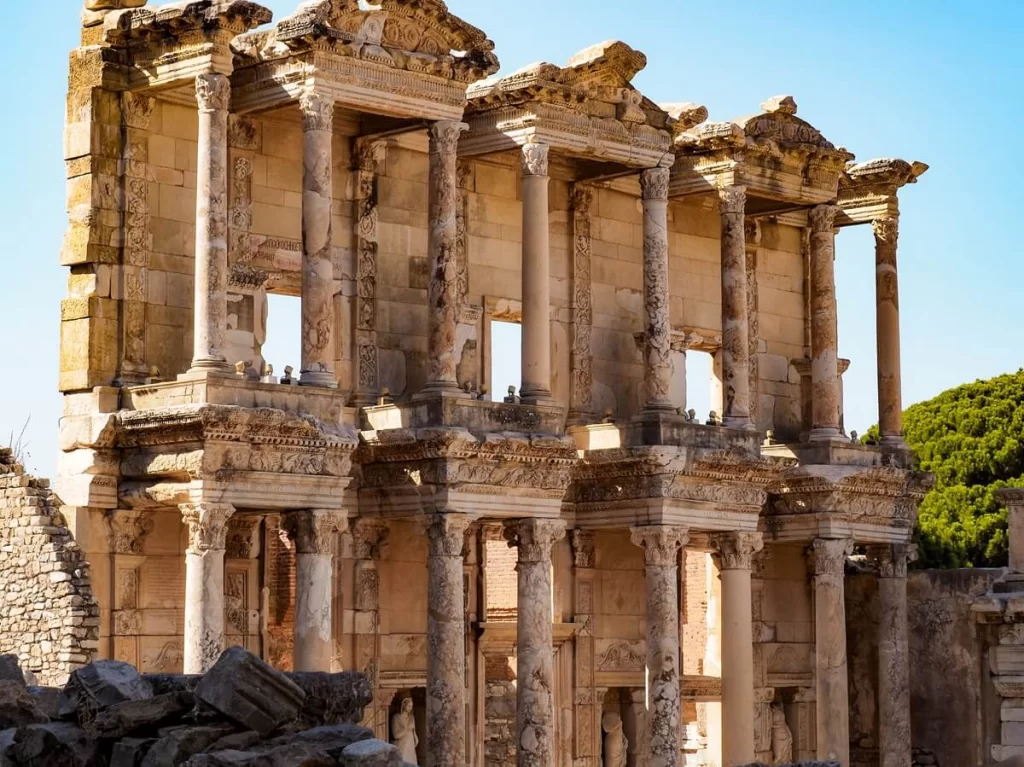
About the Ancient City of Ephesus
Located about 3 km to the west of Selcuk, Ephesus is probably the most complete ancient city in Europe. It is home to one of the Seven Wonders of the Ancient World: the Temple of Artemis. In addition, Ephesus has also been a UNESCO World Heritage Site since 2015. So it’s no wonder millions of tourists come here every year.
Ephesus was one of the most important ancient Greek cities, and also a major trading center in the Mediterranean. The city survived multiple natural disasters and attacks, changing hands many times over the centuries. For example, it was the second biggest city in the Roman Empire.
Ephesus also played an important role in the spread of Christianity, and today it is a pilgrimage destination. Both Saint Paul and Saint John visited the ancient city, and Mary apparently spent her final years in Ephesus with Saint John.
According to some sources, only about 20% of the site is fully excavated.
Read Next: 2 Days in Selcuk Itinerary, Turkey (Türkiye)
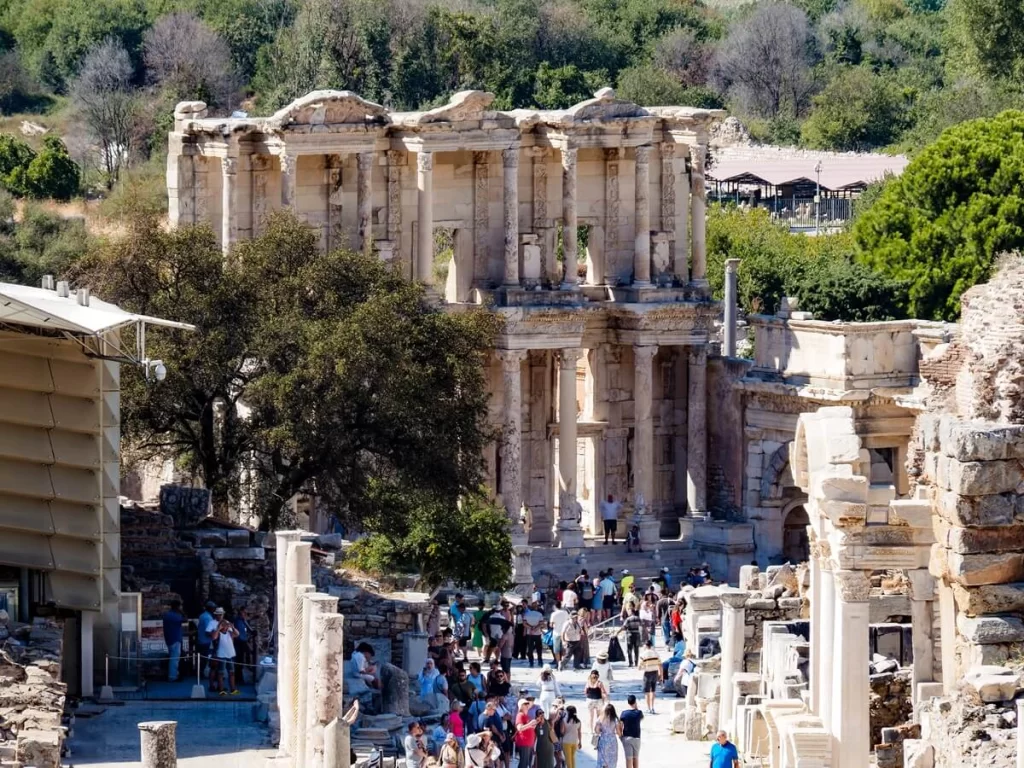
Our Top Travel Resources to Visit Ephesus
- 🛏️ Find your accommodations with Booking.com
- 🎫 Book an organised tour from Selcuk with GetYourGuide
- 🛡️Don’t forget to buy travel insurance via SafetyWing
Things to Know Before Visiting Ephesus in Turkey (Türkiye)
Ephesus Guided Tour or Independent Visit
You can visit Ephesus with or without a guide. If you just want to take a day trip there because you’re on a cruise or short on time, then we recommend joining a guided tour. That way, you don’t need to worry about your transport and you can also learn more about the site.
However, you can totally visit the ancient city on your own. The best way to visit without a guide is to stay at least 2 days in Selcuk, the closest city to Ephesus. From there, you can get to the site for either opening time or later in the afternoon, and enjoy it before the bigger tour groups arrive, or after they’ve already left. Visiting on your own will also allow you to wander around at your own pace, and spend as long or little as you like in certain parts. You can always use the audio guide included with your ticket, which will allow you to learn more about the site without a guide.

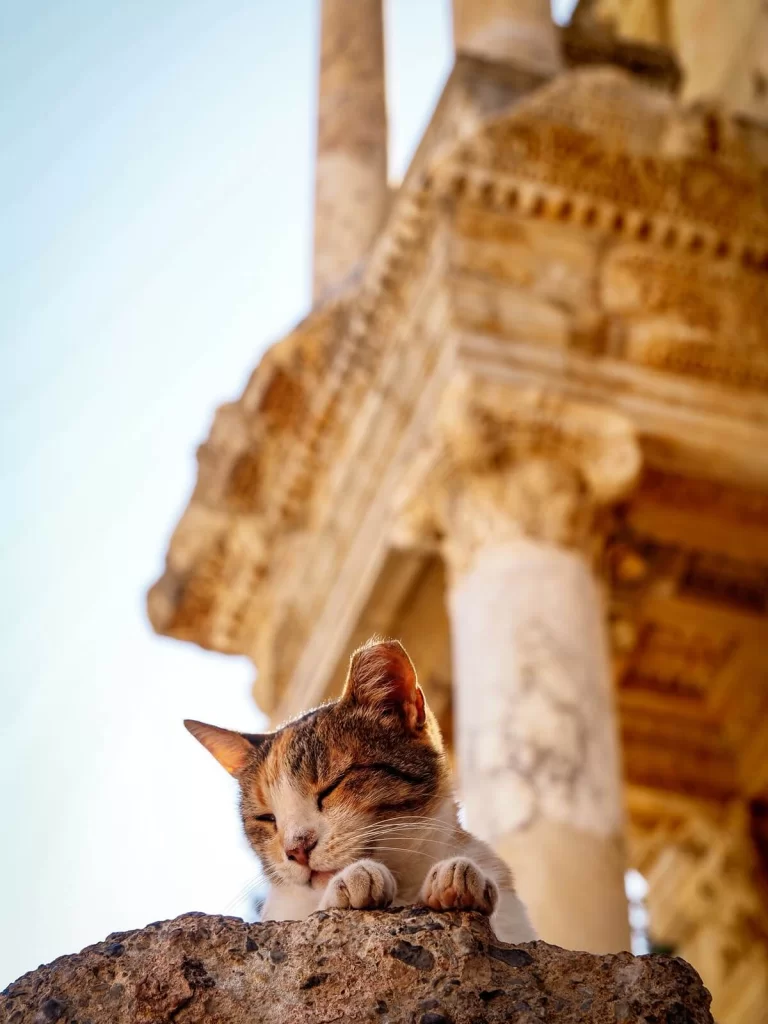
Ephesus Entry Fee and Opening Hours
The site is open every day between 8AM and 6:30PM during the summer months, with slightly shorter opening times in winter.
One single entry to Ephesus is currently 40 EUR. There’s a separate entry fee of 15 EUR for the Terrace Houses. However, you can buy a combined entry ticket to the site and the Terrace Houses for 52 EUR, which we personally recommend. For 65 EUR you can also visit Ephesus Museum and the Basilica of St John in Selcuk. Note that prices are prone to change so always check the official website for more up-to-date information.
Top Tip. If you’re staying in Türkiye for longer, then we recommend getting either the Aegean Museum Pass for 95 EUR or the Türkiye Museum Pass for 165 EUR. It might seem like a lot, but when you add up the individual entry fees from each place you want to visit, it may work out cheaper in the end. You can check out what’s included in these passes here.

When is the Best Time to Visit Ephesus
You can basically visit Ephesus all year round, however there are better and worse times during the year. The colder months are January and February, whereas the hottest months will be July and August. The latter also coincide with the summer school holidays, which means that the site can get pretty crowded with large tour groups.
If you’d like to have a more pleasant experience, both with the temperature and the crowds, then we recommend visiting in the shoulder season; so either in spring or autumn.
If you’re visiting Ephesus in Turkey during the high-season, then we recommend getting to the site for opening time. That way you can avoid both the crowds and the heat as much as possible. Alternatively, you can also visit later in the afternoon, when a lot of people have left and the temperatures are more bearable.
How to Get to Ephesus
The easiest way to reach Ephesus is from the town of Selcuk. The ancient city is located about 3 km to the west of the town, so you can even walk there if you wish. Alternatively, you can just take a taxi there.
If you’re coming from further afield, then you can get to Izmir by either plane, bus or train first. From there, you can travel to Selcuk by train or bus. If you’re coming from Istanbul, then you can take a direct bus to Selcuk. It’s worth noting that visiting Ephesus independently on a day trip from Istanbul wouldn’t really be possible, so we recommend calculating in at least a nights stay in Selcuk.

Where to Stay When Visiting Ephesus in Turkey (Türkiye)
The ancient city of Ephesus is relatively far from other main tourist destinations in the Aegean region of Türkiye, or along the Turkish Riviera. Therefore, unless you’re visiting via a cruise or are on a day trip from somewhere nearby, we recommend spending around 2 nights in Selcuk.
Although Selcuk is a small town, it offers a good number of accommodation options. It is very walkable, but we suggest staying somewhere close to the centre where most of the attractions are. Plus, that way you won’t need to walk too far to the bus and train stations.
We stayed in Amazon Antique, which is a renovated farm house with a leafy courtyard that also included a great breakfast. The hotel was also very close to the top attractions in Selcuk. You could also check out Anz Guest House, which has a colourful interior, a rooftop terrace with lovely views of the area, and also includes breakfast. There are also many hotels with pools, such as Akanthus Hotel Ephesus, which is a great option if you’re visiting in the hotter months.

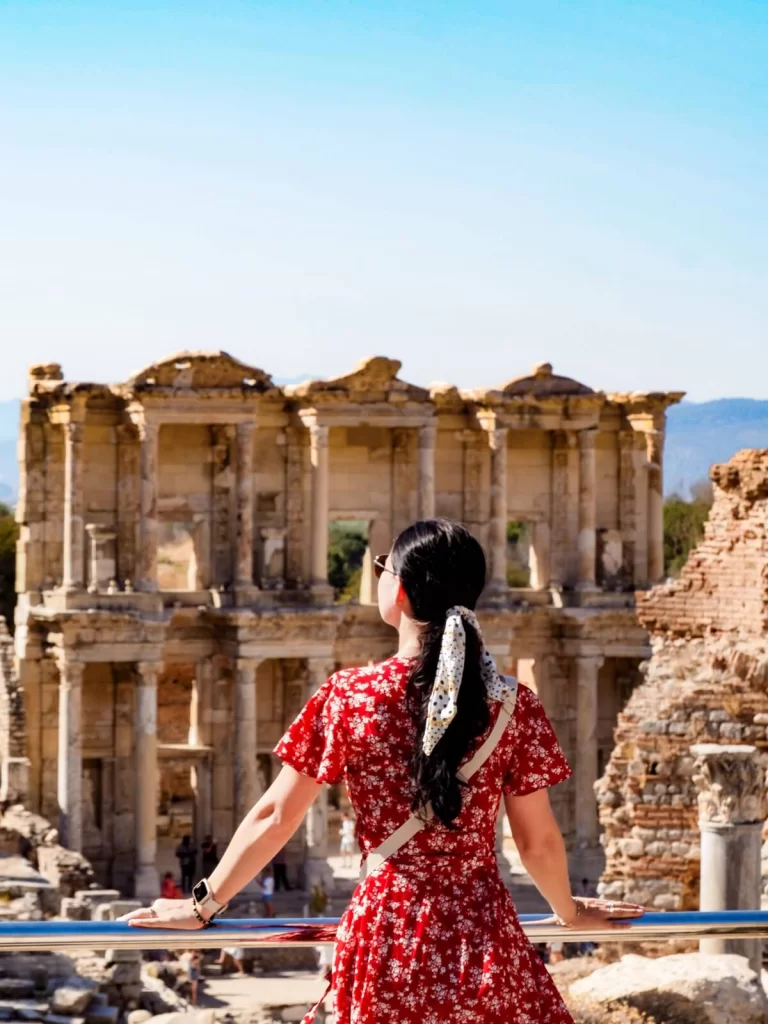
What to Wear When Visiting Ephesus in Turkey (Türkiye)
Depending on which season you’re visiting in, we generally recommend wearing something weather appropriate. Note that there won’t be any shade really, so if you’re there during the height of the summer then you’ll want to make sure you’re wearing sufficient sun protection. Wear something loose-fitting and light to keep you cool, and enough SPF on any exposed skin. Bring a hat and sunglasses for additional protection.
Regardless of when you’re visiting, we highly recommend wearing comfortable shoes. The site is pretty big and you don’t want your feet to be hurting as you explore. The rocks can get pretty slippery too, which is another reason you’d want something with good grip. We saw quite a few people slipping in their flip-flops.
Whilst there are a few food stalls near the entrances, there won’t be much once you’re inside. Therefore, bring plenty of water with you to stay hydrated during your visit. Bringing some snacks might also be a good idea in case you get a bit peckish.
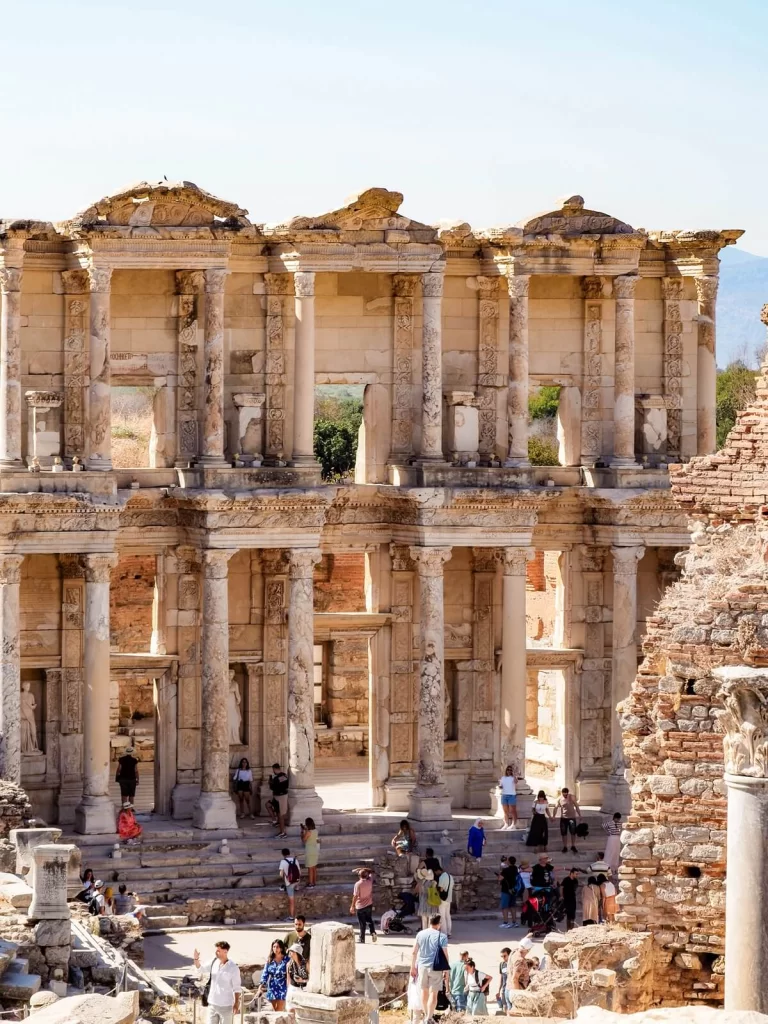
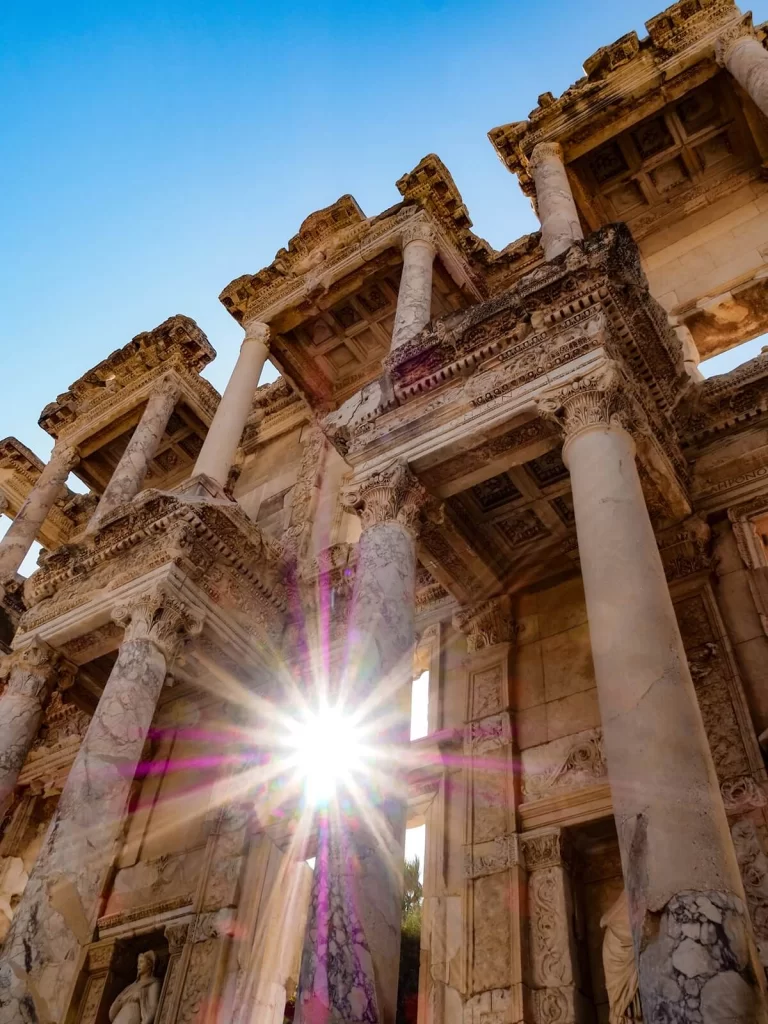
What Not to Miss When Visiting Ephesus in Turkey (Türkiye)
Below we’ve listed some of the main points of interest you shouldn’t miss during your visit to the ancient city of Ephesus. If you’re visiting during the high season, you might want to get to some of these spots early on to beat the crowds. They’re popular for a reason.
Note. There are two gates you can enter the site from. We believe that tour groups normally enter through one and get picked up at the other.
1. Library of Celsus
The most popular, and photographed, spot in Ephesus is the Library of Celsus. This isn’t surprising, since it’s possibly the most stunning structure in the ancient city.
The library was built in the 1st century AD as a tribute to Tiberius Julius Celsus Polemaeanus by his son, Tiberius Julius Aquila. It was the third largest library in the ancient world. The facade has some beautiful carvings and Corinthian columns. You can also see some statues in the niches between the columns symbolizing wisdom (Sophia), knowledge (Episteme), intelligence (Ennoia) and valor (Arete).
Top Tip. If you’re visiting independently, and want to see the library without the crowds, then definitely head here first.
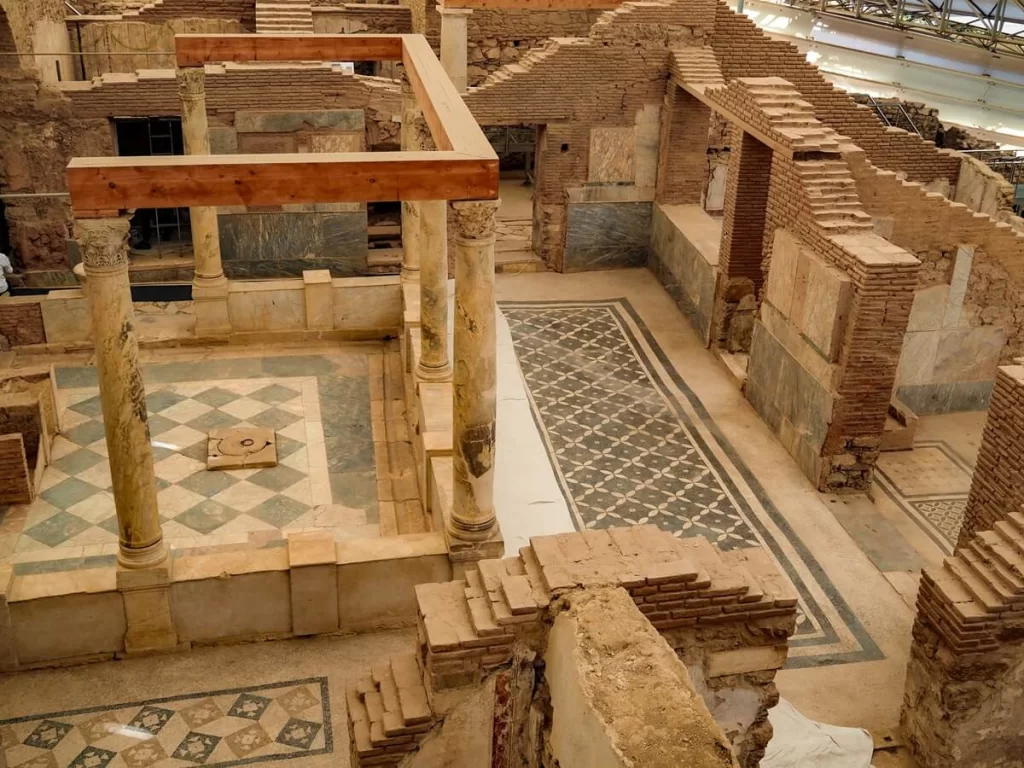
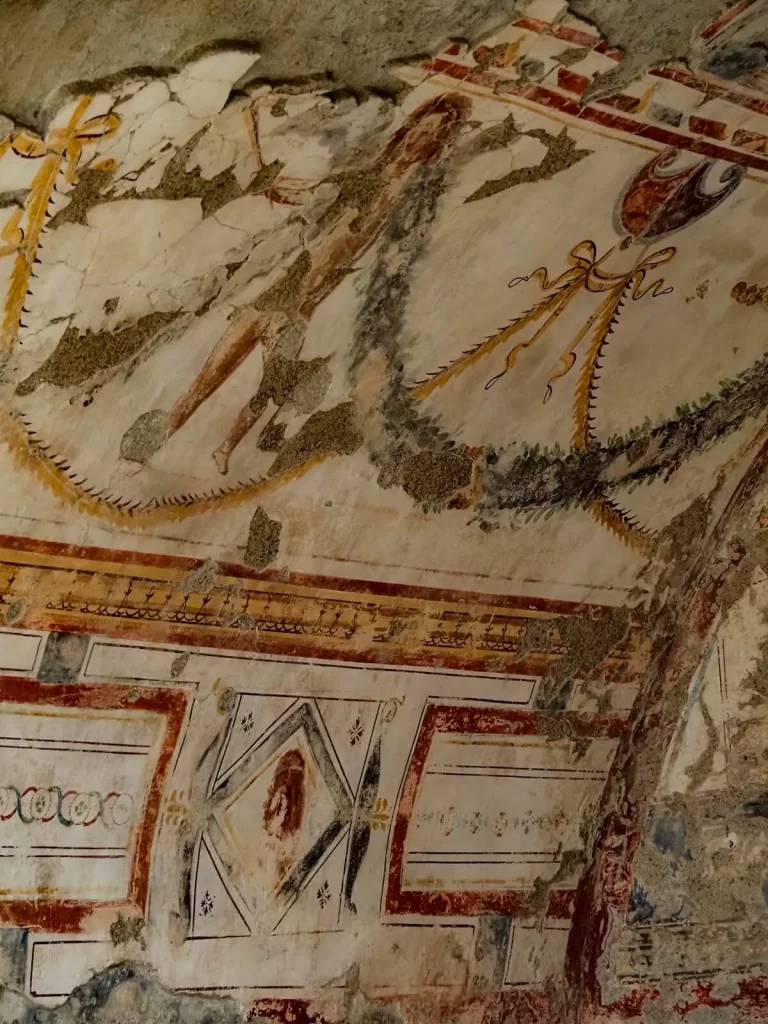

2. Terrace Houses
A must visit area of Ephesus is the Terrace Houses. They were luxurious residential buildings used by the societal elite between the 1st and 7th century AD.
When they were abandoned, a large portion was buried beneath soil. Thanks to this, they have been preserved in remarkable detail, giving us a glimpse into how the wealthy people of Ephesus once lived. As you walk around, you’ll see plenty of beautiful frescoes on the walls and stunning mosaics on the floors.
Note. You can’t visit the Terrace Houses with an Ephesus only ticket. You can buy the combined ticket for 950 TL (28 EUR), or use your Museum Pass.
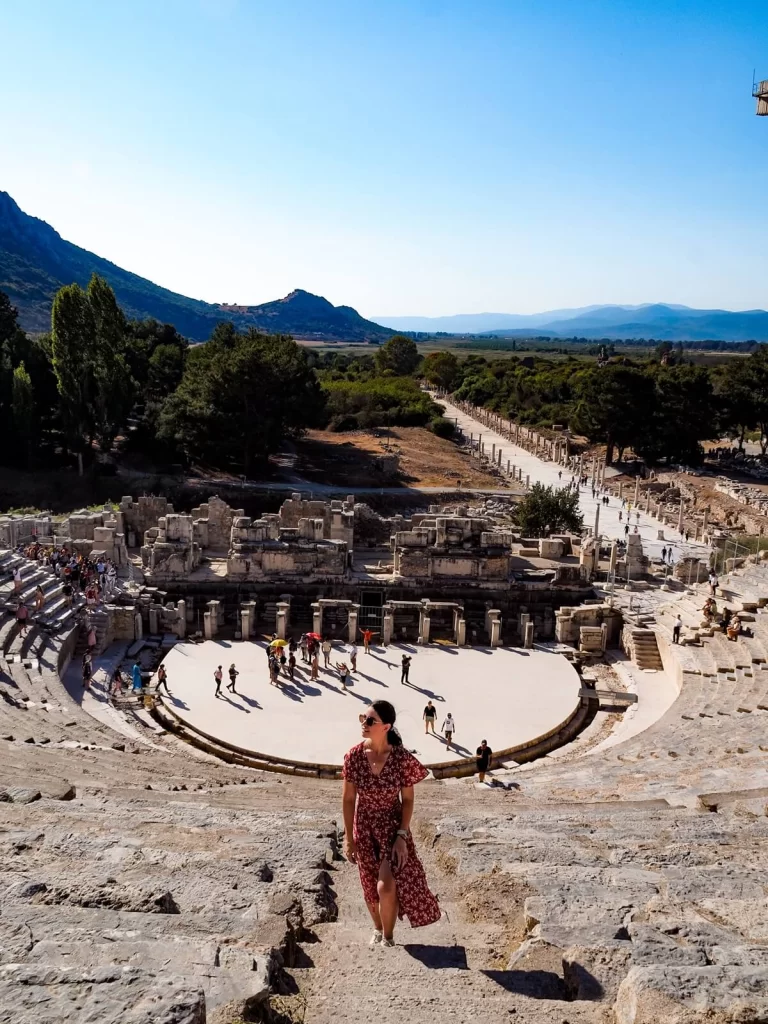

3. The Great Theater and the Odeon
Another iconic area within Ephesus is the Great Theater. It was built in the 4th century BC as a Greek Theater, which was later converted into a Roman Theatre.
You’ll see that it is massive! It had a capacity of 24,000 people, making it the largest ancient theater in the country. Apparently famous singers such as Elton John, Sting and Madonna have held concerts at this theater. Imagine how cool that would’ve been to attend!
There’s also a much smaller one constructed by the Romans, called Odeon, in Upper Ephesus. It has a capacity of 1,400 people and served as a space for performances, concerts, political meetings, and other social events.
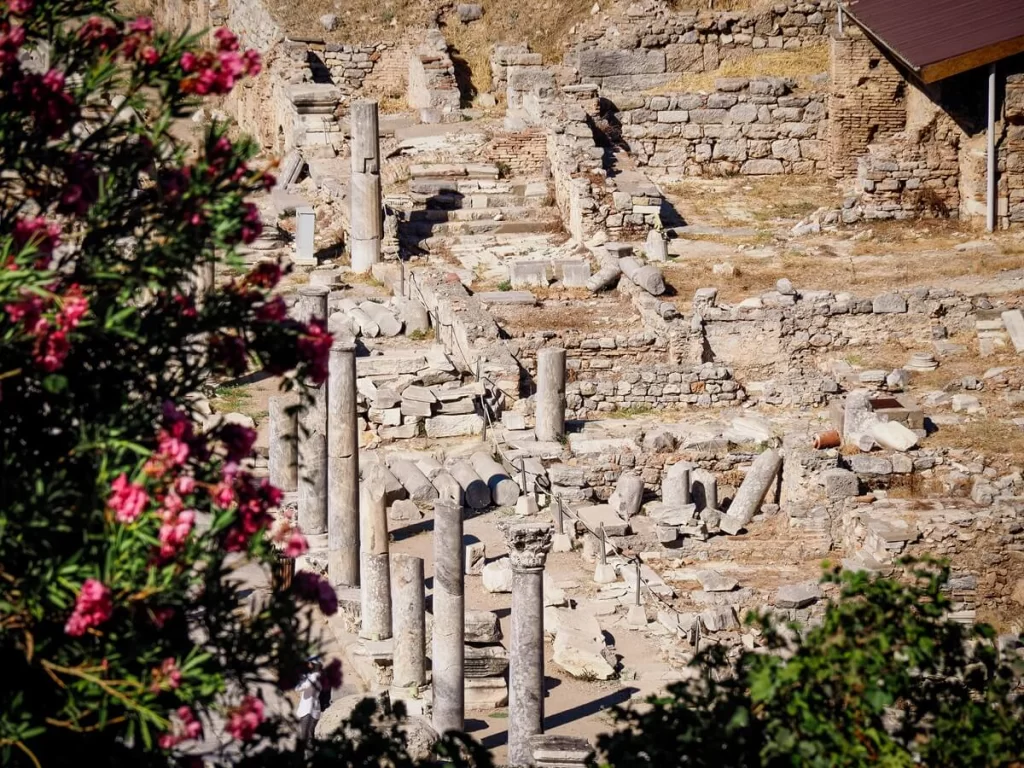
4. Agoras in Ephesus
There are two agoras in Ephesus. The bigger one, called Commercial Agora, is 11,000sqm and is located in Lower Ephesus. It was originally built in the Hellenistic period, and was then expanded in the Roman era. During Roman times, it was open every day.
State Agora is located within Upper Ephesus. The current structure was built in the Roman Period, although there was one here in the Hellenistic period too. It used to be a public area where they also held governmental discussions.
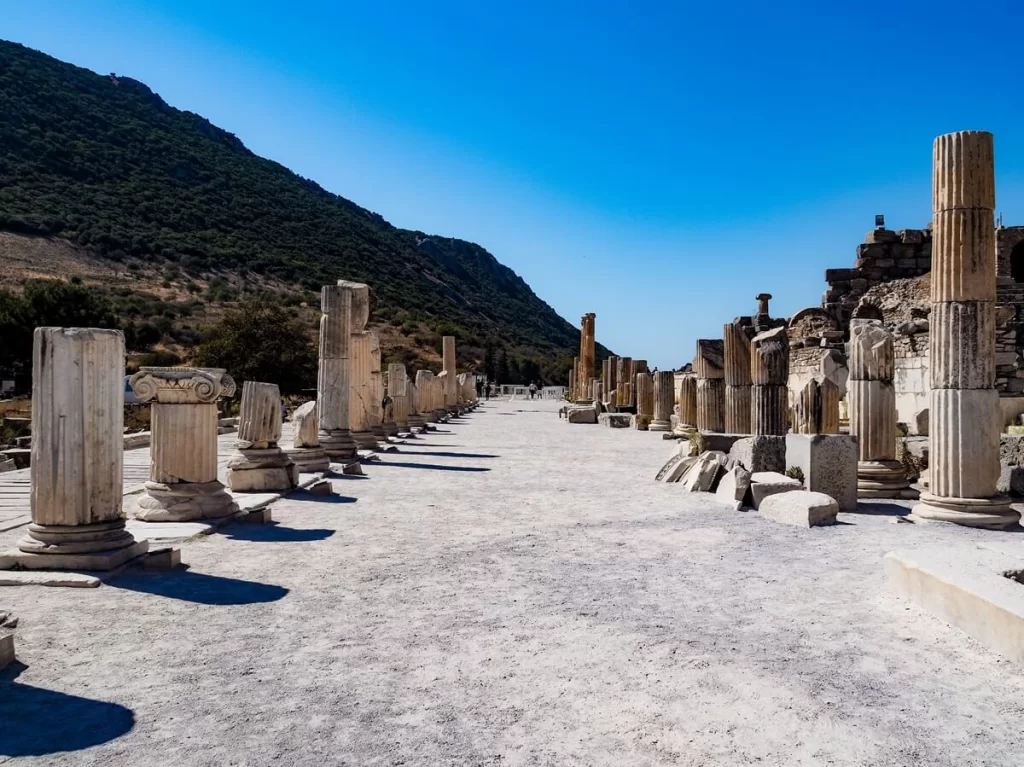
5. Main Streets of Ephesus
There are three main streets in Ephesus which you’ll most likely walk along. One of them is Harbor Street, or Arcadian Street, which starts from the Theater and ends in the harbour. It is about 530m long and 11m wide, and there used to be shops on either side.
The other notable street is called Marble Street. It starts in front of the Library of Celsus, passes the Theatre and goes all the way to the Temple of Artemis. The third street you’ll stroll down is Curetes Street, which connects Upper and Lower Ephesus.
Don’t forget to check out the beautiful mosaic-paved sidewalk located next to the Terrace Houses.
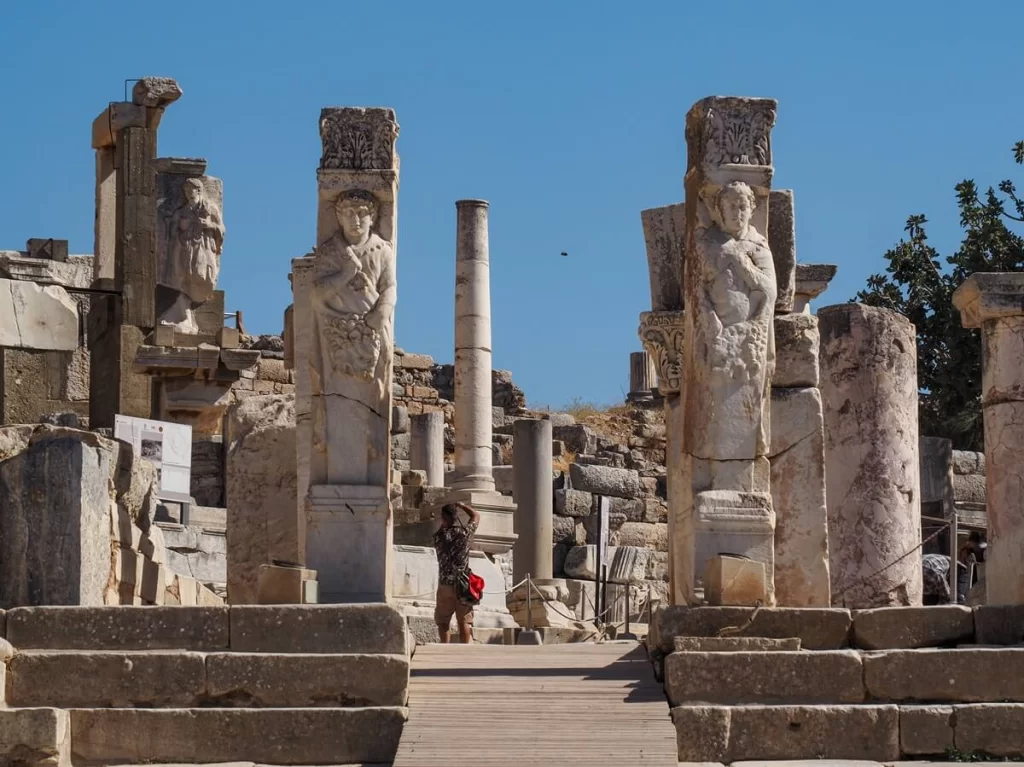
6. Gates in Ephesus
There are a few notable gates you should stop by when walking around. Located right next to Celsus Library is the Gate of Mazeus and Mithridates. This triumphal arch was built in 40 AD by two slaves, Mazeus and Mythridates, in honour of Emperor Augustus, who gave them their freedom.
Another gate you should see is the Hercules Gate, located along Curetes street, which divides the upper city of Ephesus. Its name comes from the reliefs of Hercules that decorate the columns.
Another triumphal arch in Ephesus is Hadrian’s Gate. As you’ve probably guessed, this gate got its name from Emperor Hadrian, who is well-known for building impressive structures such as the Theatre in Hierapolis in Pamukkale, and Hadrian’s Wall in the north of England in the UK.
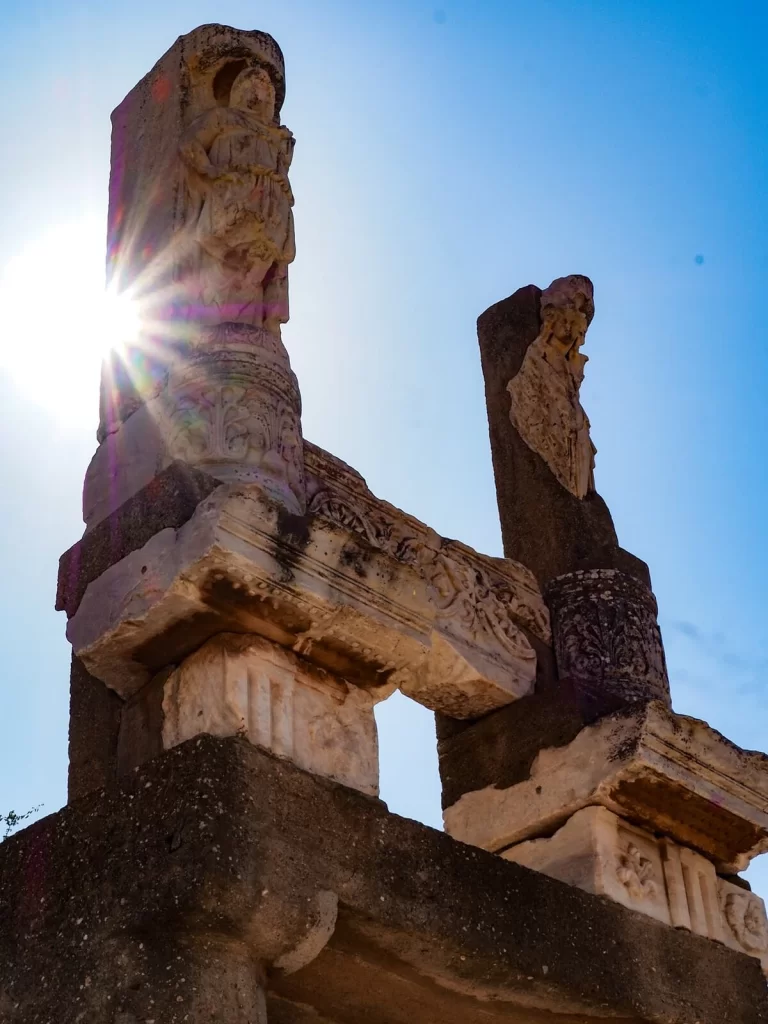
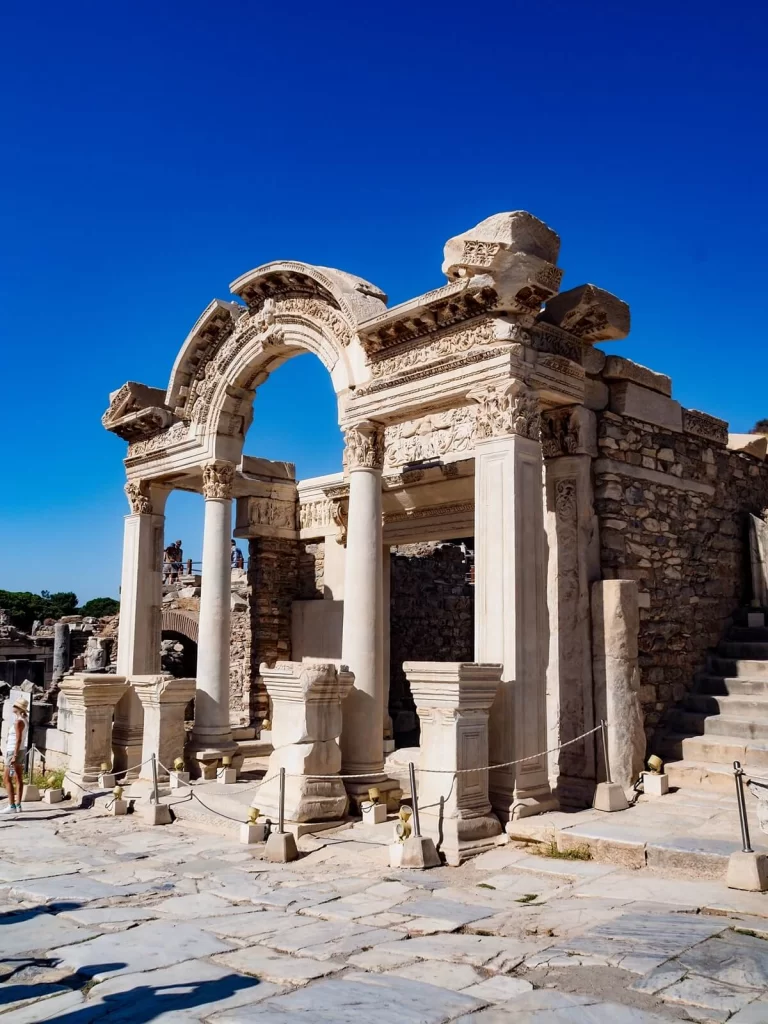
7. Temples of Ephesus
There are also a few temples within Ephesus you should try to see. One of the best preserved is Hadrian’s Temple, built in honour of Emperor Hadrian. Another is the Temple of Domitian, which was constructed in the 1st century AD. It was apparently the biggest temple in the city, however not much of it is left today. There’s also the Temple of Isis, which is an Egyptian temple.
You can see Temenos, located between the Odeon and the Prythaneion, and the Temple of Serapis, which is located in the Commercial Agora.

8. Fountains of Ephesus
As you wander around the site, you’ll notice quite a few remains of beautiful fountains too.
- Trajan Fountain is located next to Hadrian’s Temple, and is one of the most impressive fountains in Ephesus. It is dedicated to Emperor Trajan.
- Fountain of Pollio, located opposite the Temple of Domitian, is dedicated to Pollios Sextiliues, who built the aqueduct that carried water to the fountains of the city.
- Hydreon Fountain is located around Hercules’ Gate. They probably used the water in this fountain to keep the streets clean.
Fancy visiting other ancient cities in Türkiye? If so, then check out some of our other blog posts:

Final Thoughts on Visiting Ephesus in Turkey (Türkiye)
Visiting Ephesus in Turkey (Türkiye) independently, and staying in Selcuk for a few nights, was a great decision. We were so glad that we could enjoy the site later in the afternoon when some of the big tour groups were already leaving. Since we were there at the start of September, the temperatures were still pretty high, so getting there later was a great way to avoid the hottest part of the day. The site itself was very impressive, and it sometimes felt like we’d been transported back in time, especially in the Terrace Houses.
Have you ever been to the ancient city of Ephesus in Turkey before? If so, did you visit on your own or as part of an organised tour? If not, would you visit Ephesus independently? Let us know in the comments below.
Now, let your adventure begin,

Our Top Travel Resources
Accommodation: For hotels we always use Booking.com and Hostelworld for hostels. We also book longer stays on Airbnb or Vrbo.
Flights: To find the best flight prices we always check Skyscanner, Google Flights or WayAway. Then we also check the airlines’ websites too for comparison.
Car Rentals: We use Discover Cars when we want to rent a car as it compares local, national and international companies.
Activities: If we book organised tours we always check either GetYourGuide or Viator.
Foreign Currency: Whenever we can we prefer to pay in local currency and for that we always use our Wise card. We can easily withdraw money from the ATM or pay by card at most shops and restaurants.
Travel Insurance: We never go anywhere without travel insurance. You never know what will happen on your trip, so good travel insurance like SafetyWing can protect you in case of injury, illness, theft and cancellations.
eSIM and VPN: To get data abroad we use Airalo which is an app that allows you to download a prepaid eSIM to your phone in over 190 countries. Make sure to have a VPN to avoid hackers accessing your personal data when using public WIFI. We use Surfshark which is the only VPN that offers one account on unlimited devices.

